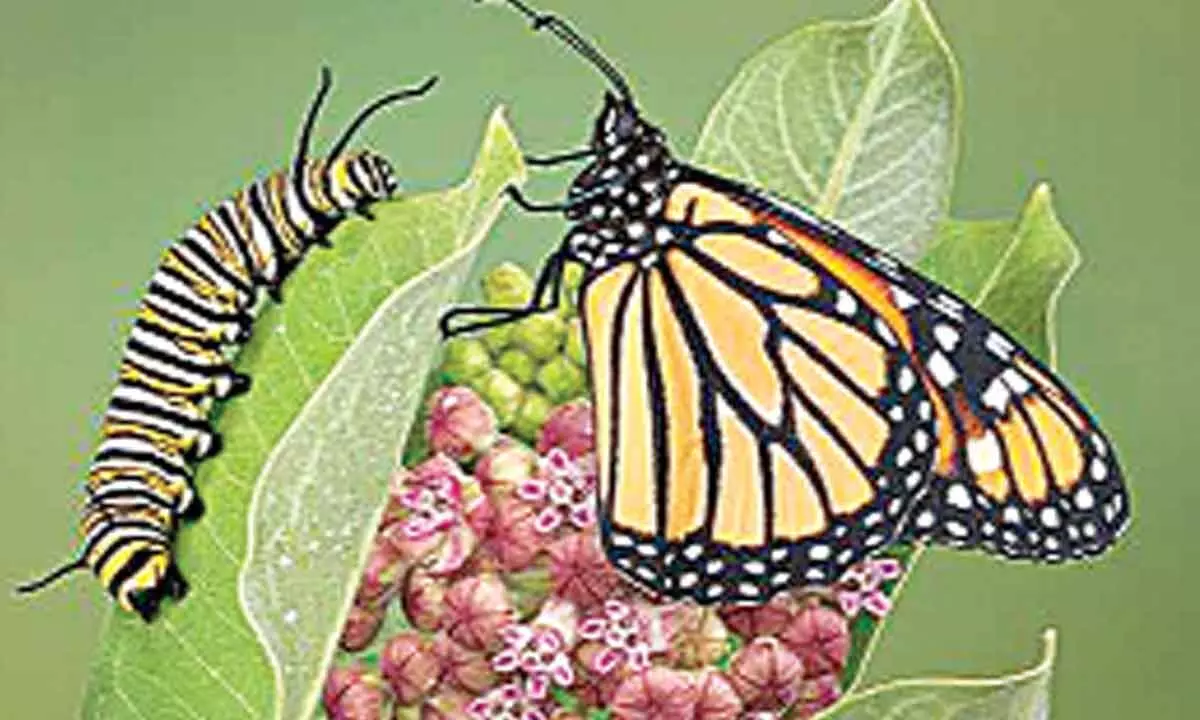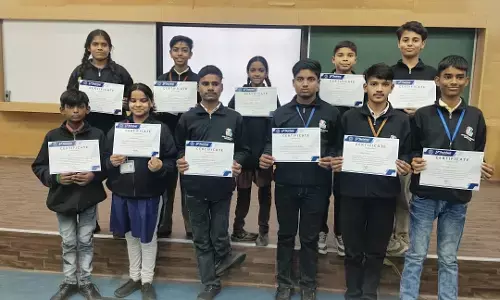Where schoolchildren learn from caterpillars, butterflies

A group of children in a government higher primary school at Moodambail in Karnataka's coastal Dakshina Kannada district has created a 'butterfly effect' in their lives by engaging in a project involving rearing of caterpillars to adult moths and butterflies and studying their growth.
The students undertook the project as part of a nationwide programme launched by Navi Mumbai-based iNaturewatch Foundation, bringing in schoolchildren to document the moth life cycle in a three-month long project.
The foundation took up the project in association with the 'National Moth Week' (NMW) global programme beginning on World Environment Day on June 5 every year. NMW is an annual event which brings moth lovers of all ages to participate in a celebration of moth diversity across the globe.
Entomologist and iNaturewatch founder Dr V Shubhalaxmi, NMW country coordinator Pritha Dey and biodiversity researcher Vijay Barve are the core iNaturewatch team who introduced the scheme to children this year.
With this scheme, iNaturewatch wants the children to have a chance to become 'citizen-scientists'. With their dedicated work, these children of rural Moodambail have proved a point and also won honours from the organisation.
Around 200 schools across the country participated in the project. The largest collection of caterpillars, numbering over 100, was bred by the students of Moodambail school, who reared 40 of them to moths and butterflies in a month. The remaining are at different stages of growth.
A team of 22 children from classes 6 to 8 were chosen to take up the project at the school in early August.
The school's headmaster Aravind Kudla said he was attracted by a Facebook post about the caterpillar rearing project for children. He contacted the coordinators of the nationwide programme and got his own pupils involved in the project with the aim of developing their scientific curiosity. The children collected more than 100 caterpillars from plants around their environment and brought them to school. The worms were kept in boxes with holes and the students began to look after them by feeding them plants and regularly cleaning the boxes.
Kudla said around 60 caterpillars were successfully bred by the students into adult moths. Of these, 40 turned into grown-up moths and butterflies by August 31, the date on which the project ended. The students documented the plants from where the caterpillars were picked (host plants) and the changes in their life cycle through photographs and notes. The teachers at the school, led by headmaster Kudla, helped them record the findings in digital form and sent it to iNaturewatch.
















